When choosing voice assistants for fitness watches, you’ll need to evaluate your smartphone’s operating system compatibility first – Siri works best with iOS devices while Google Assistant integrates seamlessly with Android. Assess response speed during workouts, as quick command execution prevents interruptions during training. Check if the assistant can control fitness apps hands-free and access health data offline. Battery life impact varies greatly between models, so contemplate your usage patterns and charging preferences to find the ideal balance for your needs.
Understanding Voice Assistant Options for Fitness Watches

When selecting a fitness watch, you’ll encounter several voice assistant options that can greatly enhance your workout experience and daily health management.
Apple Watch Series 9 features Siri with offline capabilities, enabling seamless health data access and workout controls without internet connectivity.
Google Assistant appears on devices like Fitbit Versa 3, offering extensive voice commands for weather updates, reminders, and smart home integration.
Amazon Alexa supports fitness education and health-related apps, though it’s limited in direct health tracking functions.
Samsung’s Bixby and other proprietary assistants provide ecosystem-specific integration with their respective smartwatch brands. The Galaxy Watch 6 offers dual assistant support by including both Bixby and Google Assistant for enhanced user flexibility.
Some models even support multiple assistants, letting you switch between options based on your preferences and device compatibility needs.
Compatibility Requirements Between Smartwatches and Smartphones
Voice assistants offer powerful features, but they’ll only work effectively if your smartwatch properly connects with your smartphone.
Seamless smartphone connectivity is essential for unlocking your smartwatch’s full voice assistant potential and advanced features.
You need to verify several compatibility requirements before purchasing a fitness watch with voice capabilities.
Your phone’s operating system must meet minimum requirements. Android devices need version 5.0 or higher, while iOS devices require version 10 or later. Additionally, your phone needs adequate hardware specifications to handle the connection smoothly.
Key compatibility requirements include:
- Bluetooth 4.1 or higher for stable wireless connection
- At least 1.5 GB RAM for smooth performance
- Compatible companion app available for your phone’s OS
- Latest software updates installed on your smartphone
- Regional carrier support if using eSIM features
Samsung Galaxy watches typically require Android 6.0 or higher when pairing with non-Samsung smartphones, though specific models may have different requirements.
Check these specifications before making your purchase decision.
Essential Features to Look for in Voice-Enabled Fitness Watches
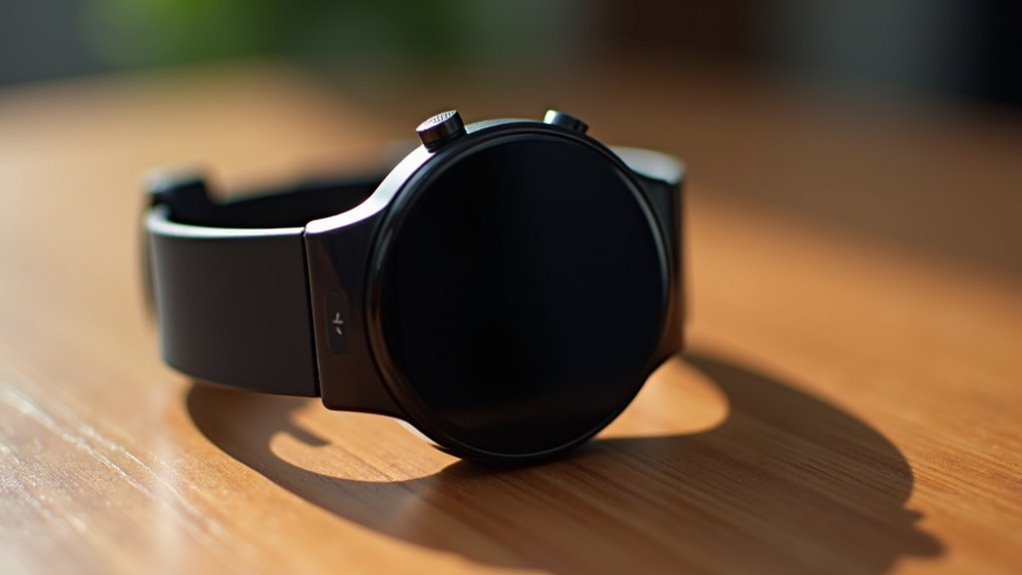
When you’re shopping for a voice-enabled fitness watch, you’ll want to prioritize three critical features that’ll make or break your experience.
First, you need lightning-fast voice command responsiveness that won’t leave you waiting mid-workout when you ask for your heart rate or lap time.
You’ll also want seamless fitness integration capabilities that let you control workouts hands-free, plus smart battery life optimization that won’t die on you during long training sessions. Look for models with voice recording capability that add extra utility beyond basic command responses.
Voice Command Responsiveness
How quickly your fitness watch responds to voice commands can make the difference between seamless workout control and frustrating delays.
When you’re pushing through an intense training session, every second counts, and sluggish response times can disrupt your flow.
Key factors that determine voice command responsiveness include:
- Low latency processing – Minimal delay between speaking and receiving feedback
- Fast wake-up times – Quick activation from sleep or standby mode
- On-device processing – Reduced reliance on internet connectivity for faster responses
- Noise recognition accuracy – Reliable command detection amid gym sounds and wind
- Complex command handling – Ability to execute multi-step instructions efficiently
You’ll want a watch that consistently delivers quick, accurate responses regardless of your environment or activity level.
Professional athletes and fitness enthusiasts have tested these devices in extreme environments from volcanoes to canyonlands, proving their reliability under the most demanding conditions.
Fitness Integration Capabilities
Most fitness enthusiasts need their voice assistant to do more than just answer questions—it should seamlessly integrate with their health and workout routines.
Look for voice assistants that can report real-time health metrics like heart rate and blood oxygen levels through voice commands. You’ll want integration with popular fitness apps to track data and set personalized goals using only your voice.
Essential features include voice announcements of your progress—steps taken, calories burned, or distance covered during activities. The assistant should provide continuous updates during running or cycling sessions. Advanced models offer music storage capabilities of up to 8GB, allowing you to control your workout playlist hands-free without needing your phone.
Choose systems that sync data across multiple platforms and support various operating systems. Third-party app compatibility expands functionality, while GPS integration guarantees accurate location-based tracking for outdoor workouts.
Battery Life Optimization
Voice-enabled fitness watches face a fundamental challenge: powerful features demand significant energy, potentially leaving you without tracking capabilities when you need them most.
You’ll need to balance voice functionality with battery longevity through smart optimization strategies. Choose watches with advanced power management chips and efficient display technology to minimize energy consumption.
Look for models offering customizable battery saver modes that let you control voice features based on your needs.
Consider these battery optimization features:
- Solar charging capabilities for extended runtime during outdoor activities
- Hybrid wake-word detection reducing standby power consumption
- Screen-off voice assistant mode conserving display energy
- Variable connectivity bitrates optimizing Bluetooth and radio usage
- Activity-based profiles automatically adjusting voice processing intensity
Models like Garmin’s solar-powered watches effectively offset voice feature drain while maintaining essential functionality. Premium options feature VOOC charging technology that can fully recharge your device in under an hour, ensuring minimal downtime between training sessions.
Comparing Top Smartwatch Models With Voice Assistant Integration
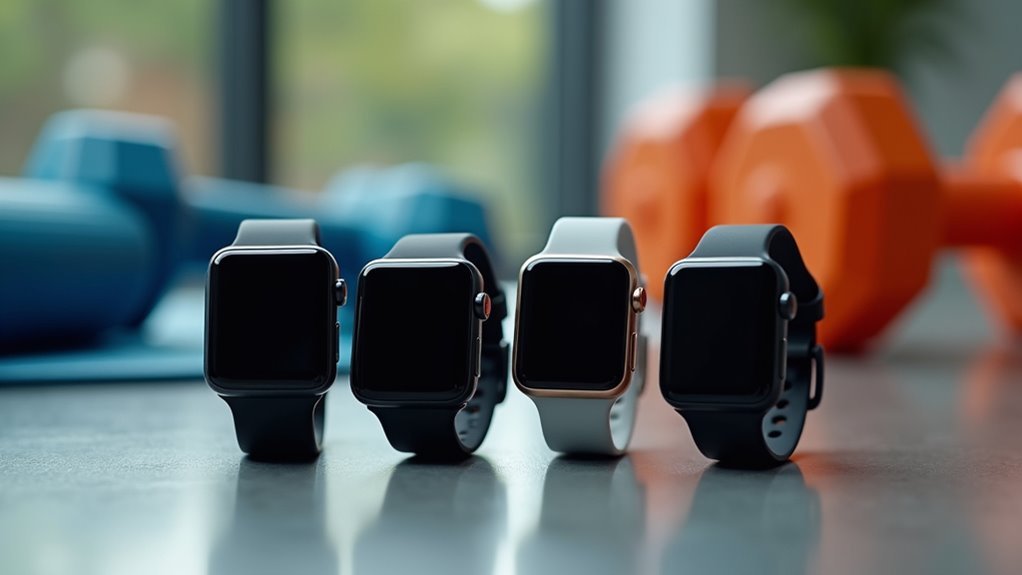
When you’re selecting a voice-enabled fitness watch, you’ll need to compare how well different models integrate popular voice assistants like Siri, Google Assistant, and Alexa.
You should examine each watch’s performance capabilities, from processing voice commands quickly to maintaining reliable connections with your smartphone and smart home devices. Modern smartwatches function as wearable computers with cellular connectivity that enhance their voice assistant responsiveness.
Your choice will ultimately depend on compatibility with your existing ecosystem and how effectively the voice assistant handles fitness-specific tasks like tracking workouts and providing real-time coaching.
Popular Model Features
Today’s leading fitness watches offer distinct approaches to voice assistant integration, each tailored to different user priorities and ecosystems.
You’ll find varying levels of functionality depending on your chosen device and preferred platform.
Here’s what you can expect from popular models:
- Garmin Venu 3 – Built-in microphone/speaker with offline music control but requires phone connection for full features
- Apple Watch Series 10 – Hands-free Siri activation with deep iOS integration and extensive app control capabilities
- Google Pixel Watch – Full Google Assistant support with Android ecosystem integration and limited offline commands
- Fitbit Models – Amazon Alexa or Google Assistant integration focused on health tracking complement
- Battery Performance – Garmin offers 14-day life while Apple/Google require daily charging
Your choice depends on smartphone compatibility and desired feature depth. CNET’s testing involves evaluating companion software for ease of navigation across all smartwatch models to ensure optimal user experience.
Performance and Compatibility
Beyond identifying which features matter most to you, the actual performance of these voice-enabled fitness watches varies considerably across brands and models.
You’ll find the Apple Watch Series 9’s 18-hour battery life falls short of Garmin Venu 3’s impressive 15-day capacity, while Google’s Pixel Watch requires charging twice daily.
The S9 chipset powers enhanced Siri functionality on Apple devices, enabling detailed voice commands without Wi-Fi connectivity. However, you’re locked into iOS compatibility with Apple Watch, whereas Garmin works with both Android and iOS.
Garmin excels in fitness tracking precision but offers limited third-party apps. Google Assistant performs efficiently on Pixel Watch, though some models lack speaker functionality for voice responses. The Samsung Galaxy Watch 6 delivers deep Google Assistant integration alongside comprehensive health monitoring features.
Accessibility and Hands-Free Operation Benefits
Voice assistants on fitness watches deliver essential accessibility benefits that extend far beyond basic convenience.
These features transform how you interact with your device, particularly if you have visual, motor, or hearing impairments.
Voice assistants revolutionize device accessibility, breaking down barriers for users with visual, motor, and hearing challenges through intuitive interaction methods.
Key accessibility advantages include:
- Screen reader integration – VoiceOver and similar technologies read display content aloud for visually impaired users
- Hands-free navigation – Voice commands and gesture controls eliminate the need for manual interaction
- Customizable audio settings – Adjustable volume levels and dual-channel audio support various hearing needs
- Enhanced safety features – Fall detection and emergency SOS provide critical alerts during emergencies
- Wheelchair-friendly tracking – Specialized activity monitoring through push detection accommodates different mobility needs
You’ll find these features enable multitasking while maintaining safety, especially during driving or exercise. Voice assistants function as a virtual aide that ensures constant accessibility regardless of your current activity or physical limitations.
Technical Performance Specifications That Matter
When evaluating fitness watches with voice assistants, the underlying technical specifications determine how smoothly these features perform in real-world scenarios.
You’ll need sufficient processing power to guarantee voice commands execute quickly without lag. Memory capacity directly affects how many apps and voice-activated features your watch can handle simultaneously.
Look for AMOLED displays with 1.39-inch screens and 390×450 pixel resolution for clear visual feedback during voice interactions.
Bluetooth 5.2 connectivity guarantees reliable communication between your watch and smartphone. Your watch should support regular software updates to maintain peak voice assistant performance and security.
GPS accuracy becomes vital when using voice commands for workout tracking and navigation. Advanced watches utilize five satellite systems for enhanced positioning precision during voice-controlled activities.
Multiple sensors including heart rate and blood oxygen monitoring enhance voice-controlled health features, while water resistance protects these components during various activities.
Battery Life Considerations for Voice Assistant Usage
Although voice assistants add tremendous convenience to fitness watches, they’ll greatly impact your device’s battery performance throughout the day. Continuous listening and processing triggers frequent wake cycles that drain power faster than standard fitness tracking.
Always-on microphones consume considerably more energy than manual activation methods.
Consider these battery optimization strategies:
- Choose manual activation over always-on voice features to conserve power
- Select watches with multi-day battery life like Garmin Fenix or solar-charging models
- Disable voice assistants during GPS activities since both features compound battery drain
- Customize sensitivity settings and listening windows to balance functionality with efficiency
- Turn off unnecessary background processes and schedule updates during charging periods
Premium models with efficient processors and larger batteries better handle voice assistant demands. Some fitness trackers achieve extended battery life of up to 21 days without voice features enabled.
Cost Analysis and Value Comparison Across Price Points
Beyond battery performance, your budget will ultimately determine which voice-enabled fitness watch features you can access.
Budget options like the Amazfit Band 7 offer basic heart rate monitoring and sleep tracking for around $39, but lack voice control entirely.
Mid-range devices such as the Fitbit Inspire 3 and Garmin Vivosmart 5 cost $99-$149, providing voice assistants with core fitness features but limited GPS capabilities.
Premium models like the Garmin vívoactive 5 or COROS Pace 3 range from $229-$300, delivering advanced voice integration, built-in GPS, and extensive health metrics. These higher-end devices typically support 120 activity types for comprehensive workout tracking across various sports and exercises.
You’ll find brands like Amazfit provide similar functionality to premium alternatives at lower costs, while established brands offer better long-term support and frequent software updates for extended value.
Future-Proofing Your Voice Assistant Fitness Watch Investment
As technology rapidly evolves, selecting a voice-enabled fitness watch that’ll remain relevant for years requires careful consideration of ecosystem compatibility, AI advancement potential, and hardware longevity.
- Choose established ecosystems like Apple’s Siri or Google Assistant that integrate seamlessly with your smartphone and smart home devices.
- Prioritize advanced AI capabilities such as Amazfit’s GPT-4o integration for evolving natural language processing and personalized coaching.
- Select durable hardware with extended battery life (Garmin Venu 3S offers week-long usage) and robust build quality.
- Verify update commitments from manufacturers to guarantee ongoing feature additions and security patches.
- Ascertain emergency preparedness with voice-activated SOS commands and incident detection that’ll adapt to future safety protocols.
Frequently Asked Questions
Can Voice Assistants Work Underwater or During Swimming Workouts?
Voice assistants can’t work underwater during swimming workouts because water blocks microphones and disrupts sound waves. You’ll need to dry your watch completely before voice commands function properly again.
How Do Voice Assistants Handle Multiple Languages or Accents During Exercise?
You’ll find voice assistants can switch between languages through settings, though accent recognition varies by model. Regular software updates improve performance, but complex accents or noisy exercise environments may still cause recognition difficulties.
What Happens to Voice Assistant Data When Switching Between Different Brands?
When you switch voice assistant brands, your data typically doesn’t transfer automatically. You’ll lose personalized settings, workout history, and preferences since brands use proprietary systems with limited interoperability and data portability.
Do Voice Assistants Drain Battery Faster During High-Intensity Workout Tracking?
Yes, voice assistants drain your battery faster during high-intensity workouts. They’re continuously monitoring for commands while your watch already works harder collecting detailed fitness data, creating double the energy consumption burden.
Can Voice Assistants Interfere With Other Wireless Fitness Equipment or Headphones?
Yes, you’ll experience interference since voice assistants and wireless fitness equipment share the 2.4 GHz frequency band. This causes audio dropouts, connection issues, and reduced accuracy when you’re using multiple Bluetooth devices simultaneously.
In Summary
You’ll find the right voice assistant fitness watch by evaluating compatibility with your smartphone, prioritizing essential features like accurate fitness tracking, and considering battery life impact. Don’t overlook technical specs and hands-free accessibility benefits that match your workout style. Compare models across different price points to maximize value, and choose options with regular software updates to future-proof your investment. Your perfect voice-enabled fitness companion balances functionality, performance, and long-term reliability.

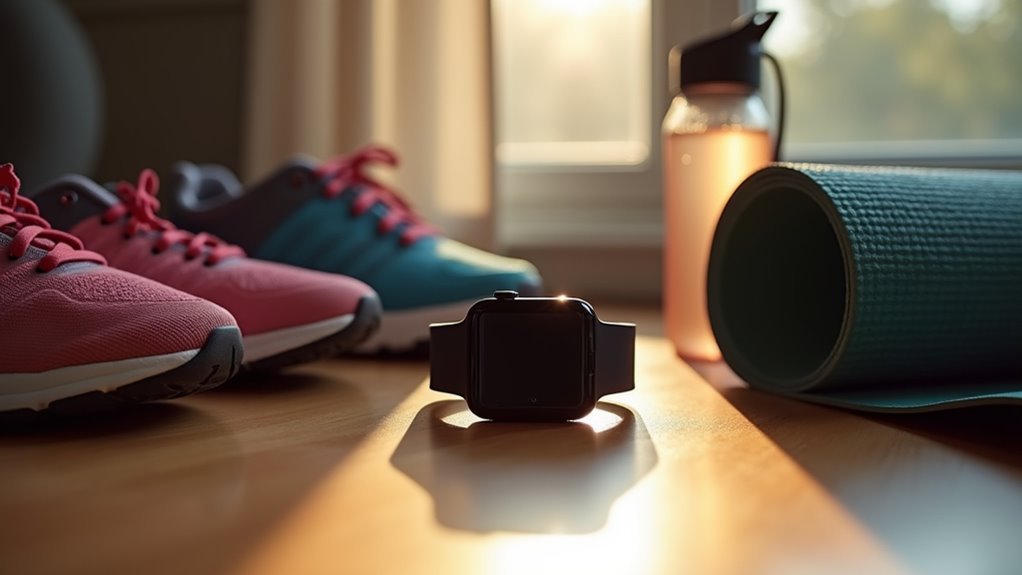
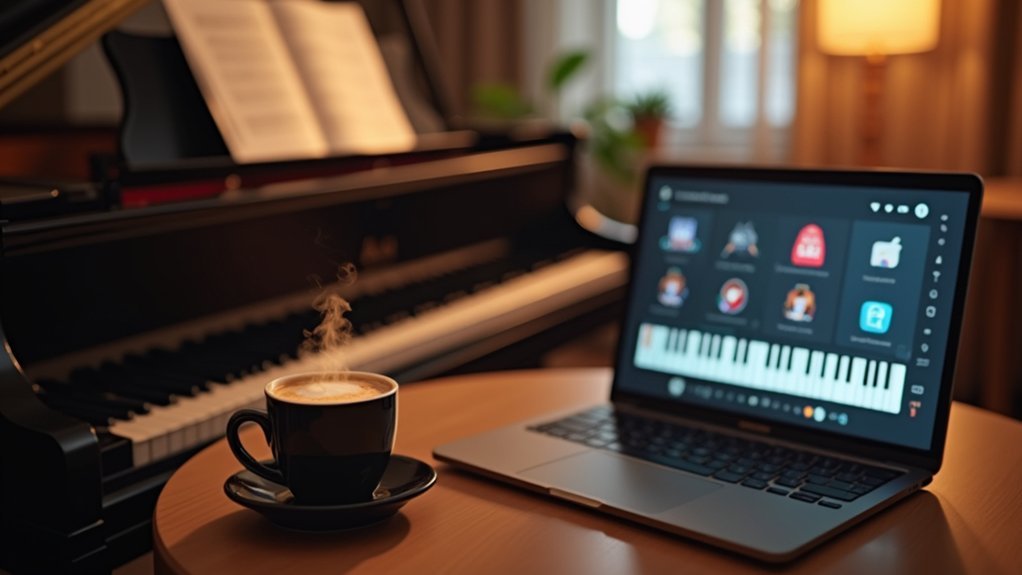
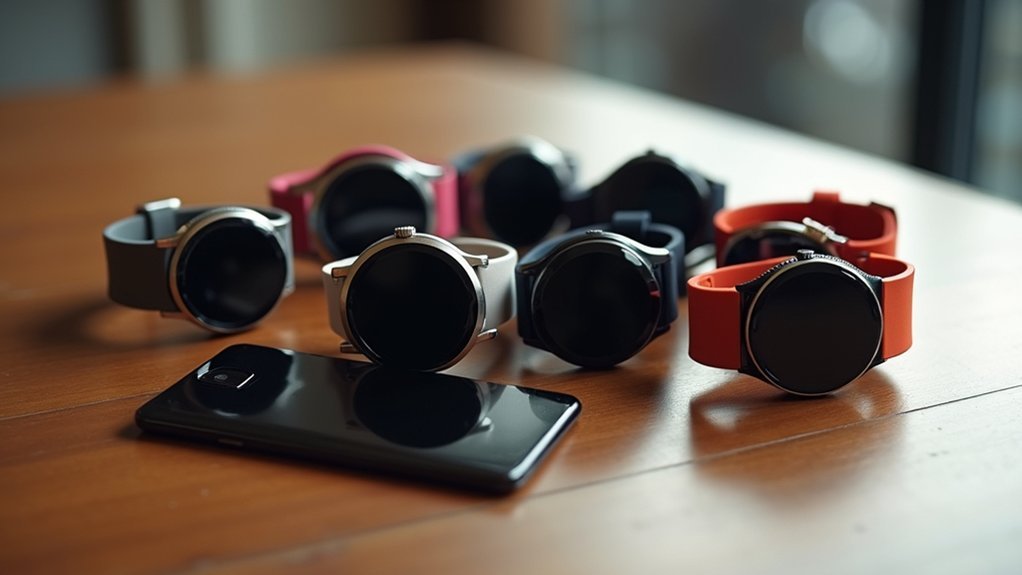
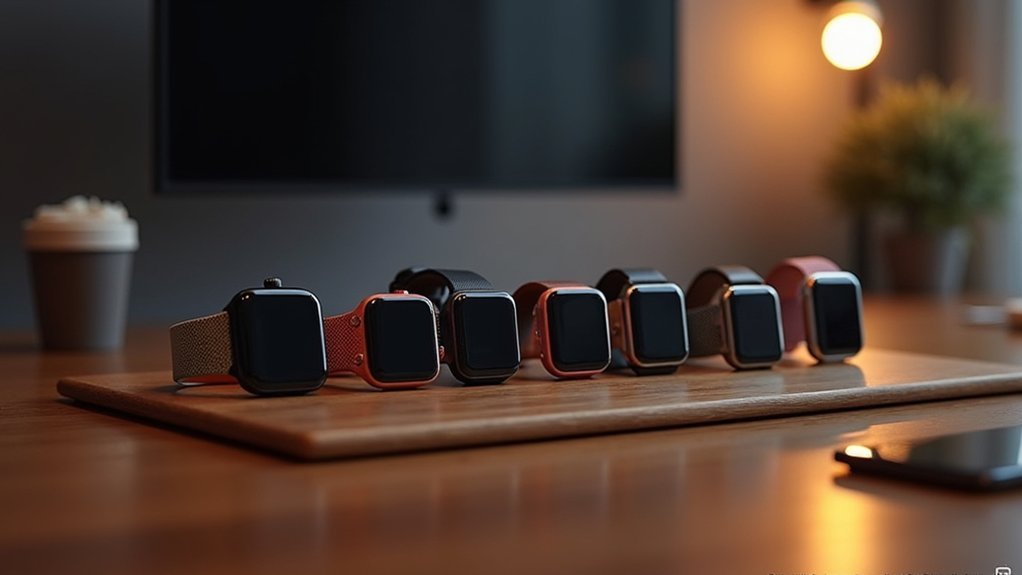
Leave a Reply